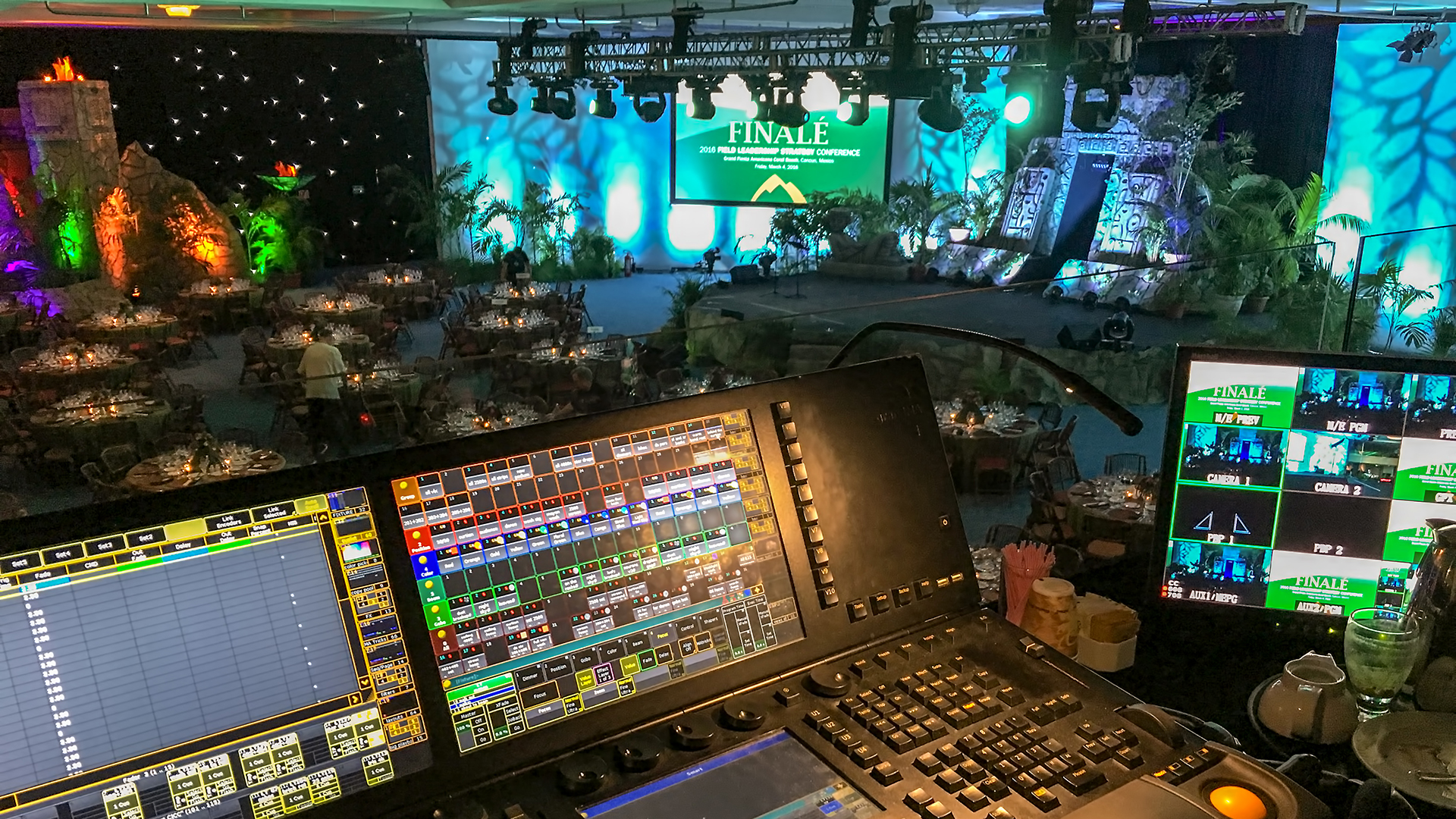August 15, 2019
Theatre Lighting Techniques for Dramatic Stage Lighting At Your Event
Camera! Action! Wait, where are the lights? We often take lighting for granted, but as an event planner, the more you know about the creative side of lighting, the more you can engage your audiences and impress them with memorable experiences.
The best way to add drama with lighting is to take a tip from the theatre. Stage lighting pros are experts at using light to evoke emotions and create a dramatic (or romantic, or we-mean-business) mood. The same goes for big music events because nothing uses more lighting to make an impact than a rock concert!
Here are some stage lighting tips and tricks we regularly use:
Basic lighting techniques enable your audience to clearly see the action
But it’s not so basic. Things on stage (and around the room, if your event isn’t merely a stage affair) have shape – human faces and bodies, backdrops, props such as tables and chairs, etc. We see shapes because light falls differently on different planes and rounded surfaces. So “basic” lighting techniques can reveal facial or other detailed features or even create the impression of shape, giving dimension to people and everything else on stage.
- Key and fill lights illuminate the front, from two slightly different directions.
- Side lights add more definition in an unusual way. Strong side light from a single direction can produce dramatic shadows on the floor or walls.
- A backlight separates people and things from the background – eliminate it and things recede. Picture your host emerging from a darkened rear stage, stepping into the front lights and picking up his backlight as he steps forward. He literally comes to life.
- Downlights (from above) can wash the stage with light, or illuminate tables at a gala without brightening the entire room. Conversely, uplighting (from below) can dramatically draw attention to a display simply because it’s so unusual.
How you use these basic lighting techniques defines your event, sets it apart, and makes it memorable.
2. Lights add color and movement and create moods
They grab attention and keep your audience focused on a certain person or area. A spotlight flashes on stage right, and all eyes are riveted. A musician steps into the light and begins to play. All eyes remain riveted. Or the spotlight widens and moves left as a string of dancers swirls onto the stage. All eyes follow the movement.
Lights can create their own movement, too. Think searchlights, or LED “fireworks,” or lights pulsating to your music. Whatever your event, there’s a light show for that. Use it to create an unforgettable Grand Entrance as guests arrive for your event. Use it as performance art to hold audience attention while stagehands reset. Use it to grab attention, settle your audience and dramatically introduce the next act or presentation.
Color and intensity are how lighting tells your story.
- Color can reflect your branding or event theme. It can enhance or instantly change a mood because different colors evoke different emotions. Warm, soft colors and a dim light level say romance, while dark, saturated colors and flat lighting can feel creepy (especially if you add some spooky music).
- Light intensity can grab audience attention and alert them to a change in the proceedings. The lights dim, and we all know the show is about to start. Anticipation builds.
- Lighting can also create decorations. Onstage, gobos (lights that shine through a masked image or shape) are commonly used to project images on walls. For events, gobos can add multiple kinds of magic, projecting everything from your logo to abstract shapes or designs that match your event theme onto walls, tables, or the floor. This an easy but effective way to transform a snoozy-looking ballroom or conference center space into a unique environment, especially because gobos can provide static or dynamic light effects.
Our crew members here at Heroic Productions bring their own personal experiences working concerts and theatre productions to every project. That experience is one reason event planners often get us involved in their projects right from the start. Together, we can create something truly unique and spectacular, whether your “show” involves a business audience of 200 or an arena crowd of thousands.
With imagination and new technologies, we can do virtually anything with light. Knowing how light works and what various lighting techniques can do will help you work with us to transform your events into exactly the stage production you envision, no matter the occasion.




